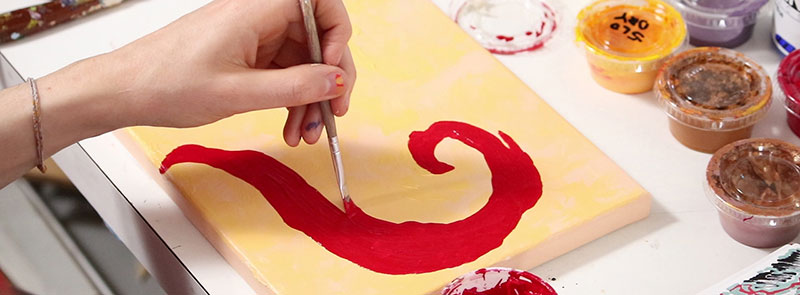Prompt
- Create an artwork of either an interior or exterior space.
- Define the space with dramatic lighting and cast shadows.
Examples
Wadalafer, Ashley Tanelle, Neil Espinosa, JenK
Shadows
- Distinguish between cast shadows and form shadows.
- This slideshow has examples of how cast shadows and form shadows differ.
- Cast shadows are more likely to define the space and planes.
- Form shadows are more likely to be found on objects.
Drawing from Life vs. Photos
- Drawing a space from life is ideal, you can really immerse yourself into the experience of the space.
- Try shooting your own reference photos; you’ll be more invested in your artwork if you have a personal connection to the space vs. picking a random photo you find online.

3D Reference Model
- Create a 3D model so you can control the types of shadows and lighting situation for your artwork.
- Moving the light around into different positions will provide lots of visual options.
- Making up shadows out of your head isn’t very effective, even for very experienced artists.
- The 3D model does not have to be beautifully crafted, it can be fairly sloppy as long as it’s producing the lighting situation you want.
Reference photos
- We have many photos in our free reference photo collection you can use on Flickr.
- This album has photos of landscapes with cast shadows.
- This album has photos of interiors with cast shadows.
Tips
- We recommend using black and white media, unless you are very experienced with color.
- Value is a huge part of capturing a sense of light.
- Usually it’s easier to see value when using black and white media.
- Color media can distract from seeing the values clearly, unless you are very experienced with light and color.
Thumbnail Sketches: Line
We recommend doing about 6 small thumbnail sketches to explore a diverse range of options for your composition. Start your first thumbnail sketches with line and think about how you want to place your subject onto the page.
Thumbnail Sketches: Value
After you finish your thumbnail sketches with line, select 2 thumbnails that you are considering for the final artwork.
Add tones and the range of values you’d like to achieve in the final artwork. Refer to these tonal thumbnail sketches as you develop the final artwork.

Inspiration
Eric Fischl, John Singer Sargent, Peter Graham, Willard Metcalf, Katherine Gulla
Paint Media
watercolor, gouache, acryl gouache, oils, water mixable oils, acrylics.
Drawing Media
We recommend soft black and white drawing media that will let you cover large areas of tone quickly, like graphite powder, charcoal, ink wash.
Digital Software Options
Procreate, Krita, Adobe Photoshop, Clip Studio Paint, Paint Tool SAI, Adobe Fresco, MediBang Paint, Gimp

Natural Light vs Artificial Light
Lighting plays a huge role for artists and can dramatically effect the mood of an artwork. This video explains the differences between artificial light and natural light in illustrations, paintings, comics, films, animation and more.
Examples in art show how natural lighting and artificial lighting create different visual affects, and how that can impact the story or mood of an artwork. Discussion led by Art Prof Clara Lieu and Teaching Artist Cat Huang.
Highlights
Lighting can be a powerful visual tool in art! This video gets down to the nuts and bolts of how lighting works in an artwork, focusing on the specifics of different types of highlights and the various ranges of visual effects they create.
Examples from art history and contemporary art show how artists can apply their knowledge of highlights, both as a visual element and as a tool for narrative storytelling.
Discussion led by Art Prof Clara Lieu and Teaching Artists Cat Huang and Alex Rowe.
Shadows
This video explains how lighting works in art, focusing on shadows and breaking down the specific visual qualities. Knowing
how shadows work, and understanding the difference between cast shadows and form shadows are important skills for all artists in order to create a broad range of visual effects in many art forms.
Discussion led by Art Prof Clara Lieu and Teaching Artists Lauryn Welch and Alex Rowe.





